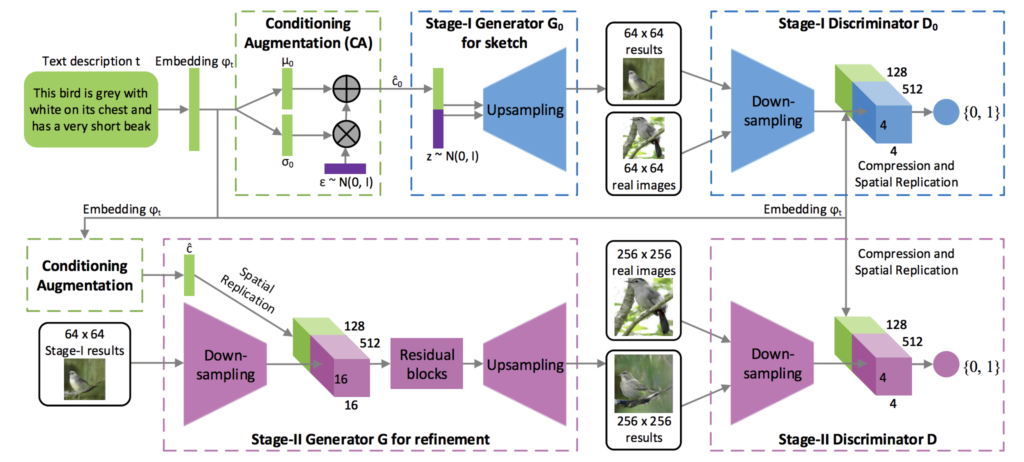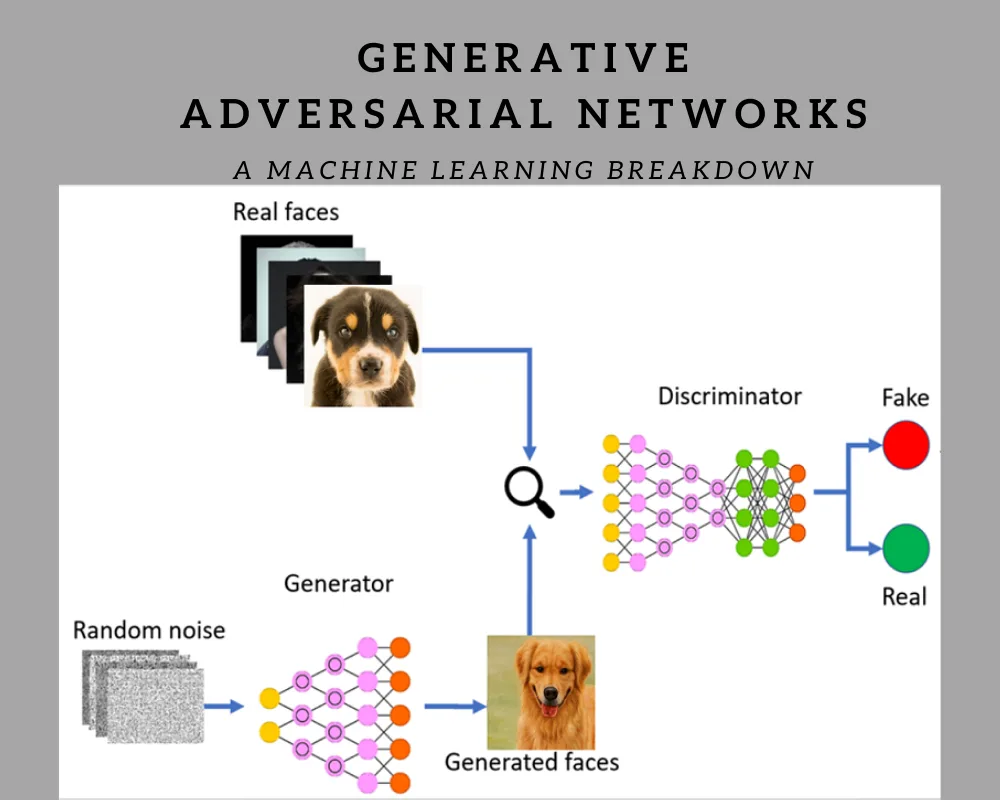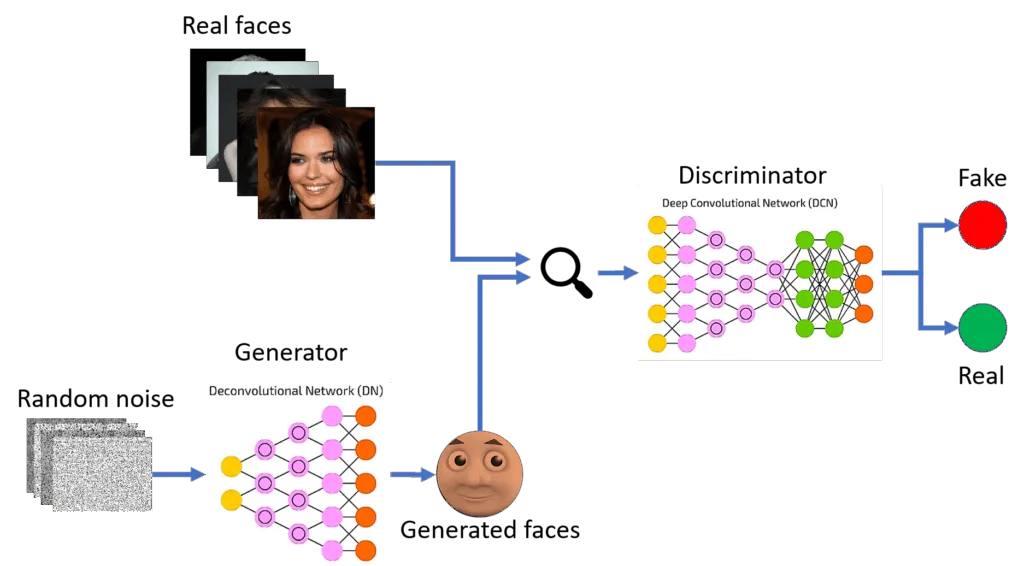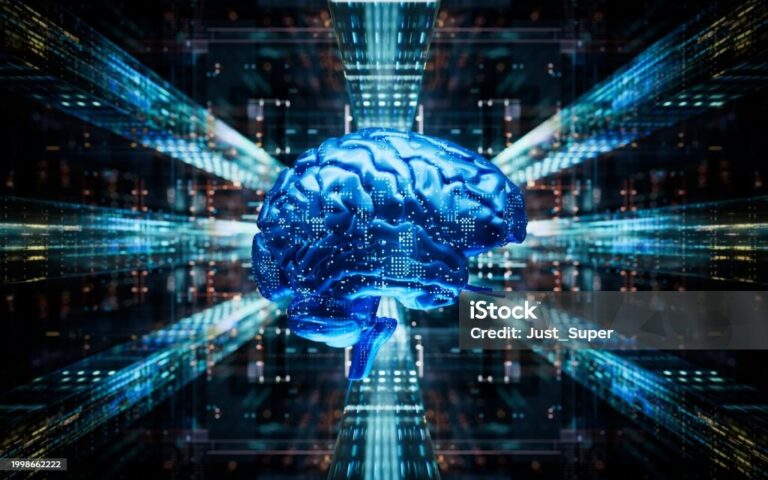Consisting of two networks (generator and discriminator) that contest with each other, GANs are used for generating new data instances that resemble the training data.

Understanding Generative Adversarial Networks (GANs)
Generative Adversarial Networks (GANs) are one of the most exciting advancements in artificial intelligence, particularly in the field of generative modeling. Introduced by Ian Goodfellow and his colleagues in 2014, GANs leverage deep learning to create new, highly realistic data samples, including images, text, and even music.
How GANs Work
At their core, GANs consist of two neural networks—the Generator and the Discriminator—that engage in a competitive game:
- Generator: This network creates synthetic data samples, attempting to mimic real-world data.
- Discriminator: It evaluates both real and generated data, determining whether the input is genuine or artificial. Through multiple iterations, the generator improves, producing increasingly realistic outputs as the discriminator refines its ability to distinguish between real and fake data.


Challenges & Ethical Considerations
While GANs offer immense potential, they also pose challenges:
- Training Instability: GANs require extensive computational resources and fine-tuning.
- Misuse of Deepfakes: Ethical concerns around misinformation, fraud, and privacy violations.
- Bias in Generated Data: If training data contains biases, GAN-generated content may inadvertently reflect them.
What are the ethical concerns surrounding deepfakes?
Deepfakes raise several ethical concerns, particularly as they become more sophisticated and accessible. Here are some of the key issues:
- Misinformation & Manipulation: Deepfakes can be used to spread false information, influencing public opinion and even political events.
- Privacy Violations: Individuals’ likenesses can be used without their consent, leading to potential reputational harm.
- Fraud & Identity Theft: Deepfake technology can be exploited for financial scams, impersonation, and unauthorized access to secure systems
- Consent & Ownership: People may have little control over how their image or voice is used, raising concerns about digital identity rights.
- Psychological & Social Impact: The inability to distinguish real from fake content can erode trust in media and institutions.
As deepfake technology continues to evolve, discussions around regulation and ethical guidelines are becoming increasingly important.
The Future of GANs
With advancements in AI research, GANs are expected to become even more sophisticated, producing content indistinguishable from real-world data. Their integration into creative fields, scientific discovery, and security applications will continue to expand.
Generative Adversarial Networks (GANs) have revolutionized various industries with their ability to generate realistic synthetic data. Here are some fascinating real-world applications:
- Image Generation & Enhancement: Used in art creation, style transfer, and even medical imaging.
· Music & Text Generation: Capable of composing music and creating coherent paragraphs of text
- Art & Creativity: GANs are used to create digital artwork, such as The Next Rembrandt, which mimics the style of the famous painter.
- Fashion Design: Brands like Balenciaga have experimented with GANs to generate innovative clothing designs
- · Healthcare: GANs help generate synthetic medical images for training AI models while preserving patient privacy.
- · Deepfake Technology: While controversial, GANs power deepfake videos, enabling realistic face-swapping and voice synthesis.
- · Data Augmentation: GANs generate synthetic data to improve AI training when real datasets are limited
- Gaming & Simulation: Used to create dynamic environments and realistic characters in video games.
- Drug Discovery: GANs assist in predicting molecular structures for pharmaceutical research.

